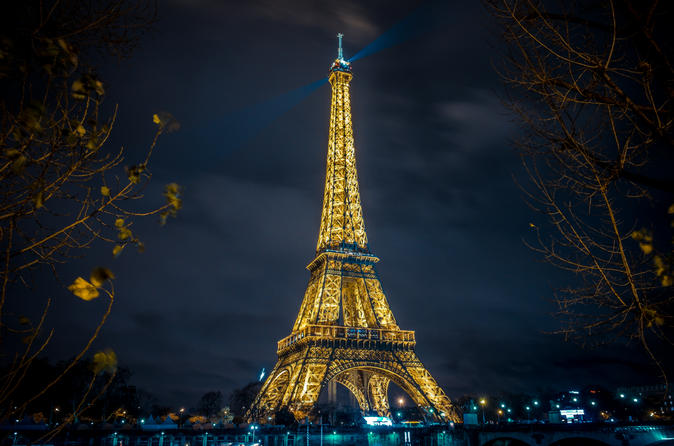
cpc
-
Posts
211 -
Joined
-
Last visited
Reputation Activity
-
 cpc got a reaction from Marco Tecno in Does Audition CC (and Premiere) support the 6 core i7 5820k?
cpc got a reaction from Marco Tecno in Does Audition CC (and Premiere) support the 6 core i7 5820k?
Dunno about Premiere but 2GB video RAM is not enough for 4K in Resolve. It should be fine for 1080p though.
-
 cpc reacted to Andrew Reid in Fuji X Pro 2 video quality a huge step up - hands on with the final hardware, pre-production firmware
cpc reacted to Andrew Reid in Fuji X Pro 2 video quality a huge step up - hands on with the final hardware, pre-production firmware
Typo sorry, meant film grain simulation. The film simulation (colour, contrast) modes are alive and well in video mode like I said at the top of the post, that's one of the main reasons for getting it!
-
 cpc got a reaction from Liam in budget "cinematic" small sensor?
cpc got a reaction from Liam in budget "cinematic" small sensor?
BM Pocket with an optical AA filter?
-
 cpc got a reaction from benymypony in budget "cinematic" small sensor?
cpc got a reaction from benymypony in budget "cinematic" small sensor?
BM Pocket with an optical AA filter?
-
 cpc got a reaction from austinchimp in budget "cinematic" small sensor?
cpc got a reaction from austinchimp in budget "cinematic" small sensor?
BM Pocket with an optical AA filter?
-
 cpc reacted to redimp in BMPCC RAW is not flat?
cpc reacted to redimp in BMPCC RAW is not flat?
I have JUST finally make it work. Thank you, I appreciate your help, if it was not for you I would think my camera is broken.
-
 cpc got a reaction from redimp in BMPCC RAW is not flat?
cpc got a reaction from redimp in BMPCC RAW is not flat?
Photoshop (which uses Adobe Camera Raw) will only have the Embedded profile available since it doesn't recognize Blackmagic cameras. ACR debayers in ProPhotoRGB, and then does another transform (to sRGB) on display and export. This is approximately equivalent to rec709 in Resolve.
Resolve will not debayer in BMDFilm unless you set it to do so. Photoshop will not debayer in BMDFilm, because it doesn't know what BMDFilm is.
-
 cpc got a reaction from redimp in BMPCC RAW is not flat?
cpc got a reaction from redimp in BMPCC RAW is not flat?
If you debayer in BMDFilm color space using BMDFilm gamma you should be able to match ProRes/Film colors. These settings are in the Camera Raw tab on the Color page.
Resolve's manual is actually pretty good and informative. It is a good idea to have a look at the relevant sections.
-
 cpc got a reaction from redimp in BMPCC RAW is not flat?
cpc got a reaction from redimp in BMPCC RAW is not flat?
Film/Video setting doesn't affect raw. It is always flat (film) internally, but what you actually see depends on the raw processing settings in your software. What app do you use for processing raw?
-
 cpc got a reaction from austinchimp in SLOG 2 with Stills colour mode - anyone else tried it?
cpc got a reaction from austinchimp in SLOG 2 with Stills colour mode - anyone else tried it?
SGamut isn't friendly to manual adjustments because of the heavily offset green primary. This is the reason Sony introduced SGamut.Cine which aligns much better with P3 and sRGB/Rec709.
Cinema, Pro and Movie (same as Stills or at least very similar, I think) gamuts have primaries aligned with Rec709/sRGB and are for this reason easily moldable with simple luma curve adjustments without introducing hue disbalance. Skin hues are subtly rotated between these (Cinema is a bit towards yellow, Movie - towards magenta, Pro in the middle; but these are subtle), and there is a small difference in hue compression (Cinema > Pro > Movie; Movie is the most compressed) but all three are fine. I've been shooting s-log2/Cinema, but wouldn't hesitate to use any of these.
It is really a question of how you interpret the color values. Since SGamut is the largest it may appear less saturated (= more subtle) even after treating it. But it certainly does have the problem (without proper remapping) of pulling skin towards yellow.
-
 cpc got a reaction from hmcindie in Canon 5D Mark II raw dynamic range versus Sony FS5
cpc got a reaction from hmcindie in Canon 5D Mark II raw dynamic range versus Sony FS5
I really like what 5d3 raw does with faces. I find it has just about the perfect amount of sharpness. And I've yet to see a better HD/2k camera for narrative in terms of image quality. Interesting that the 5d2 can be made to match this. Is 5d2 raw usable at iso 1600 with proper exposure?
-
 cpc reacted to Volker Schmidt in Canon 5D Mark II raw dynamic range versus Sony FS5
cpc reacted to Volker Schmidt in Canon 5D Mark II raw dynamic range versus Sony FS5
Yes, it´s usable with 1600 Iso.
Here an example:
-
 cpc reacted to AKH in Sigma 18-35mm is brighter at tele end... Normal?
cpc reacted to AKH in Sigma 18-35mm is brighter at tele end... Normal?
The Sigma doesn't have completely constant transmission across it's focal length range.
http://www.dxomark.com/Lenses/Sigma/Sigma-18-35mm-F18-DC-HSM-A-Canon-mounted-on-Canon-EOS-700D---Measurements__870
Would the speedbooster make it more noticeable? Not sure.
-
 cpc got a reaction from Nick Hughes in Why recording LOG with an 8bit codec is most probably going to get you in trouble.
cpc got a reaction from Nick Hughes in Why recording LOG with an 8bit codec is most probably going to get you in trouble.
This only applies to humans. We simply don't see color well at low light levels because of the way human vision works.
Cameras don't have this problem. What you perceive as lack of color in low light captured images is for a couple of reasons:
1) In naturally occuring low light situations the spectrum of the light is often overly monochromatic. For example, dusk light has lots of blue and tungsten has a strong red component. This offsets the image toward monochromatic.
2) Overly noisy image.
Anyhow, the A7s s-log2 lacks tonal precision even when shot at its minimal ISO (which is 3200) and overexposed for healthier signal.
-
 cpc reacted to Oliver Daniel in Why recording LOG with an 8bit codec is most probably going to get you in trouble.
cpc reacted to Oliver Daniel in Why recording LOG with an 8bit codec is most probably going to get you in trouble.
Actually 8bit and 10bit is inferior to my needs. I need at least 64bit color, 25 stops dynamic range, 16,000,000 ISO and a very compact full frame 14-600mm IS lens with 20 aspherical elements and F0.001 aperture. I'll just light the images in post. Images will surely look great based on these specs!
-
 cpc got a reaction from TheRenaissanceMan in Why recording LOG with an 8bit codec is most probably going to get you in trouble.
cpc got a reaction from TheRenaissanceMan in Why recording LOG with an 8bit codec is most probably going to get you in trouble.
Thanks.
Actually, my whole point with this paragraph was that even uncompressed 8-bit 4:4:4 log has its limits and they aren't particularly high. : )
-
 cpc got a reaction from TheRenaissanceMan in Why recording LOG with an 8bit codec is most probably going to get you in trouble.
cpc got a reaction from TheRenaissanceMan in Why recording LOG with an 8bit codec is most probably going to get you in trouble.
As an a7s owner, with all due respect, I can say that you are wrong. There is huge difference between s-log2 and raw. Both color and image density are significantly worse with s-log2 compared to the raw stills. Also, a7s externally recorded 4k downscaled to 1080p is easily more gradable than the in-camera 1080p.
good examples here: http://blog.inventome.com/Blog/2015/2/a7s4Ktests/Sony-a7s-Exposure-and-Noise-Workflow-with-UHD-and-Odyssey-7Q-Plus
Sensor, noise, processing, etc surely matter a lot but downplaying the importance of the available tonal precision is pointless. Yes, you can have badly quantized and processed data encoded in 10 bits, and it will still be crap. And you can have well sampled, quantized and processed data encoded in 8 bits. And it will STILL be bad if the curve is too flat for the available space. Ideally, one needs well processed data in at least 9-10 bits for log encodings with extensive DR.
It is no coincidence that the father of all log curves Cineon log is 10-bit. Back then nothing was taken for granted, nor there was any prejudice about 8 bits, so this was extensively researched by Kodak. They concluded that 9 bits are likely enough but went for 10, since 10 fits better with computers; plus, a little bit of redundancy doesn't hurt.
And lets not forget chroma subsampling. After all 4:2:2 is twice the chroma info contained in 4:2:0, and 4:4:4 is four times the chroma info contained in 4:2:0. So not all 8-bit is created equal.
In general, wider color gamuts do help grading by having better color separation, but there is no point having a wide camera gamut if there isn't the color precision to encode it properly as is the case with S-Gamut and s-log2 in the a7s. Note that many digital cameras have native color gamuts wider than film leading to color precision smaller than scanned film when encoded with the same bitdepth.
-
 cpc got a reaction from Nikkor in Why recording LOG with an 8bit codec is most probably going to get you in trouble.
cpc got a reaction from Nikkor in Why recording LOG with an 8bit codec is most probably going to get you in trouble.
As an a7s owner, with all due respect, I can say that you are wrong. There is huge difference between s-log2 and raw. Both color and image density are significantly worse with s-log2 compared to the raw stills. Also, a7s externally recorded 4k downscaled to 1080p is easily more gradable than the in-camera 1080p.
good examples here: http://blog.inventome.com/Blog/2015/2/a7s4Ktests/Sony-a7s-Exposure-and-Noise-Workflow-with-UHD-and-Odyssey-7Q-Plus
Sensor, noise, processing, etc surely matter a lot but downplaying the importance of the available tonal precision is pointless. Yes, you can have badly quantized and processed data encoded in 10 bits, and it will still be crap. And you can have well sampled, quantized and processed data encoded in 8 bits. And it will STILL be bad if the curve is too flat for the available space. Ideally, one needs well processed data in at least 9-10 bits for log encodings with extensive DR.
It is no coincidence that the father of all log curves Cineon log is 10-bit. Back then nothing was taken for granted, nor there was any prejudice about 8 bits, so this was extensively researched by Kodak. They concluded that 9 bits are likely enough but went for 10, since 10 fits better with computers; plus, a little bit of redundancy doesn't hurt.
And lets not forget chroma subsampling. After all 4:2:2 is twice the chroma info contained in 4:2:0, and 4:4:4 is four times the chroma info contained in 4:2:0. So not all 8-bit is created equal.
In general, wider color gamuts do help grading by having better color separation, but there is no point having a wide camera gamut if there isn't the color precision to encode it properly as is the case with S-Gamut and s-log2 in the a7s. Note that many digital cameras have native color gamuts wider than film leading to color precision smaller than scanned film when encoded with the same bitdepth.
-
 cpc got a reaction from Don Kotlos in Why recording LOG with an 8bit codec is most probably going to get you in trouble.
cpc got a reaction from Don Kotlos in Why recording LOG with an 8bit codec is most probably going to get you in trouble.
As an a7s owner, with all due respect, I can say that you are wrong. There is huge difference between s-log2 and raw. Both color and image density are significantly worse with s-log2 compared to the raw stills. Also, a7s externally recorded 4k downscaled to 1080p is easily more gradable than the in-camera 1080p.
good examples here: http://blog.inventome.com/Blog/2015/2/a7s4Ktests/Sony-a7s-Exposure-and-Noise-Workflow-with-UHD-and-Odyssey-7Q-Plus
Sensor, noise, processing, etc surely matter a lot but downplaying the importance of the available tonal precision is pointless. Yes, you can have badly quantized and processed data encoded in 10 bits, and it will still be crap. And you can have well sampled, quantized and processed data encoded in 8 bits. And it will STILL be bad if the curve is too flat for the available space. Ideally, one needs well processed data in at least 9-10 bits for log encodings with extensive DR.
It is no coincidence that the father of all log curves Cineon log is 10-bit. Back then nothing was taken for granted, nor there was any prejudice about 8 bits, so this was extensively researched by Kodak. They concluded that 9 bits are likely enough but went for 10, since 10 fits better with computers; plus, a little bit of redundancy doesn't hurt.
And lets not forget chroma subsampling. After all 4:2:2 is twice the chroma info contained in 4:2:0, and 4:4:4 is four times the chroma info contained in 4:2:0. So not all 8-bit is created equal.
In general, wider color gamuts do help grading by having better color separation, but there is no point having a wide camera gamut if there isn't the color precision to encode it properly as is the case with S-Gamut and s-log2 in the a7s. Note that many digital cameras have native color gamuts wider than film leading to color precision smaller than scanned film when encoded with the same bitdepth.
-
 cpc got a reaction from sunyata in Learning time: What's a Log Gamma? S-Log, C-Log, V-log, Log-C...
cpc got a reaction from sunyata in Learning time: What's a Log Gamma? S-Log, C-Log, V-log, Log-C...
sunyata's analogy is quite good. A small correction only: Prints don't have a linear representation of the scene light, not at all. Prints are heavily gamma corrected for projection in dark environments much more so than material meant to be shown on emitting displays. Print-through film curves (that is, scene-to-projection) typically have a gamma in the range 2.5-2.8.
Now first it is important where the "log" comes from. It is because humans perceive exponential light changes as linear changes. This is a logarithmic relationship. Hence, log. Log curves mimic this. Exponential scene light changes are recorded as linear changes. In other words, each increase of exposure with a stop (or doubling the light) takes the same number of coding values to encode, and not double the values of the previous stop (as do linear encodings).
There are a couple of technical benefits:
1) Much more effective and economical utilization of available coding space. This is the reason log curves encode wide dynamic ranges effectively in a smaller bitdepth. Cineon was developed to capture the huge DR of negative film in only 10 bits.
2) (And related to 1) Increased tonal precision in the dark parts of the picture, compared to a physically correct linear encoding (when using the same coding space).
Since sensors work linearly, purely logarithmic curves would waste some coding space in the blacks, because there is not enough density there. That's why practically all log curves are pseudo-log, with some compression in the black end. Arri's Log-C is probably the closest to pure log. Canon's C-log is the furthest away from pure log. The other reason is, as mentioned, mimicking Cineon. This is also, I believe, one of the main reasons all log curves have a raised pure black level. This mimicks the base density (D min) of film, as encoded in the Cineon curve to accommodate scanning film densities.
-
 cpc got a reaction from TheRenaissanceMan in A7s SLOG2 Easier to Grade with Lumetri Color
cpc got a reaction from TheRenaissanceMan in A7s SLOG2 Easier to Grade with Lumetri Color
You can increase the DRO setting if you are going to use Autumn Leaves for grading. DRO +3 flattens the low-mid range of all the styles.
-
 cpc got a reaction from webrunner5 in A7s SLOG2 Easier to Grade with Lumetri Color
cpc got a reaction from webrunner5 in A7s SLOG2 Easier to Grade with Lumetri Color
It doesn't have more highlights, whait it does is pull mid grey lower and clip signal at IRE 100. The lower midgrey point may create the illusion of more highlights latitude, but it is the actually opposite. The other three Cine curves go to IRE 109. Cine2 is supposed to be used "as is" and be broadcast safe (hence clipped at IRE 100).
I don't think any peaking setting will work well with slog. Peaking relies on contrast and contrast is very low with s-log. One way to sort of work around this is to pre-focus with a contrasty PP and switch to s-log for recording.
-
 cpc got a reaction from TheRenaissanceMan in The importance of firmware updates and why Panasonic are too late with V-LOG for the GH4
cpc got a reaction from TheRenaissanceMan in The importance of firmware updates and why Panasonic are too late with V-LOG for the GH4
Well, I have the A7s and s-log2 is unusable in 8-bit if you care one bit about image quality. Plastic skin everywhere once you restore contrast; simply not enough tonal precision in 8 bits for the flatness of this curve. Besides, the s-log2 setting doesn't use a huge chunk of the coding space, this way further screwing the tonal precision.
Canon c-log is a different story. Its curve is not log really, just log-like in the upper end. And it has less DR than s-log. Much more 8-bit friendly.
Codec is important but not as important as the bitdepth. Try working with 16 stops log in uncompressed 8-bit and see what happens even if there is no codec at play.
-
 cpc got a reaction from Daniel Acuña in Why 4:2:2 and never 4:4:0?
cpc got a reaction from Daniel Acuña in Why 4:2:2 and never 4:4:0?
This is probably for historical reasons and is related to interlaced video.
With interlaced, each of the two fields is subsampled separately (because the fields represent different time moments and subsampling them the same way as with progressive images would introduce chroma artifacts related to motion). Now, because each field is subsampled separately, if you use one of the subsampling methods with only half the vertical resolution, for example 4:2:0 or 4:4:0, this would result in gaps of two lines with no chroma samples.
Here is how a column of 4 neighbor pixels looks like in this case:
Field 1 Top row (chroma sample)
Field 2 Top row (chroma sample)
Field 1 Bottom row (no chroma sample)
Field 2 Bottom row (no chroma sample)
But if you use full vertical sampling, as in 4:2:2, there is no such issue. You only get 1 sample gaps horizontally, and no gaps vertically when applying 4:2:2 to interlaced video.
-
 cpc got a reaction from Marco Tecno in First Sony A7R II user experiences - global shutter and native ISO 800?
cpc got a reaction from Marco Tecno in First Sony A7R II user experiences - global shutter and native ISO 800?
Yeah, they put global shutter in-there, then forgot to mention it in all the marketing blurb.
Not really.










